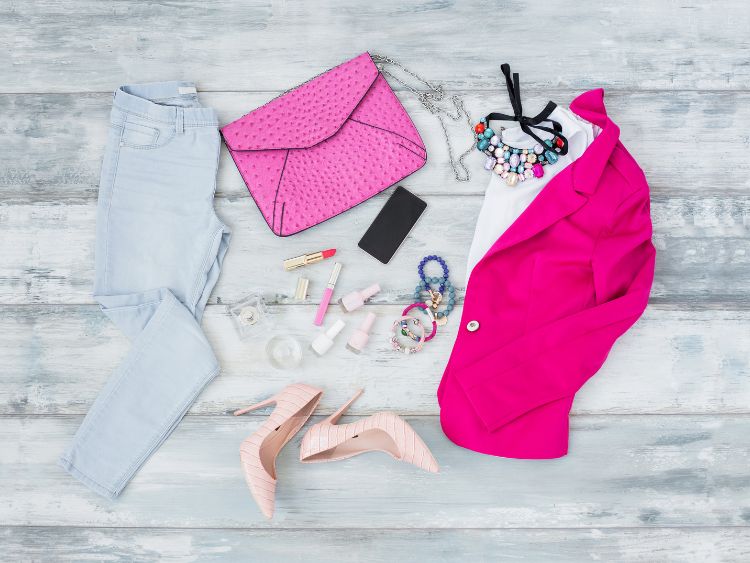Fashion is not just fabrics stitched together. It’s an assertion that reflects your the identity of the wearer, and a transforming kind of artwork. Behind every well-known label is the essence of the clothing brand–a unique blend of imagination and culture with a the connection with consumers. If it’s a designer of a high-end or a new indie brand A successful fashion brand is able to connect with its consumers by providing more than just clothes, it provides an experience.
What Defines a Fashion Brand?
In essence the fashion brand is an identity that is cohesive and goes beyond the tangible items it sells. It encompasses a distinct concept, audience and values that make its own apart from other brands in the fashion market. Brands aren’t created over night; it’s a seamless blend of constant high-end quality, distinctive aesthetics and relatable story telling.
An excellent example is the narrative element that a lot of famous fashion brands use. Gucci for example, incorporates craftsmanship, history and the latest fashions into its brand to attract consumers across the world. On the other hand brands such as Patagonia are focused on environmental sustainability and sustainability showing that a fashion company can have a greater purpose than the realm of fashion.
The Role of Branding in the Fashion Industry
Fashion branding plays crucial roles in shaping expectations. With the abundance of choices available what is the reason why people choose a certain brand? The answer is often in emotions. Fashion brands that are well-designed and designed build trust by aligning itself with the desires of its customers and values.
The branding process starts by the identification of the brand. From the logo to the selection of materials, every aspect influences the perception of the brand. For example, simple designs that are neutral in tone are a sign of sophistication, and often appeal to an elite audience. While lively colors and vibrant designs could reflect an energetic, youthful look.
Marketing also expands the reach of a fashion brand. By leveraging the power of social media and influencer collaborations and strategically-designed advertising campaigns creating a brand culture they want their customers to live in. An excellent example is Nike which transcends its own products to be a symbol for perseverance and sporting excellence.
The Rise of Sustainable Fashion Brands
As the fashion industry develops sustainability has been a key element for many contemporary brands. People today are more conscious of their purchases, and are often searching for environmentally friendly options that are in line with their beliefs. This has led to the creation of an entire sector of fashion brands that are sustainable, seeking to minimize the environmental impacts while maintaining fashion.
Brands such as Everlane as well as Reformation established their brands around sustainability and transparency. They do not just showcase fashionable designs, but also promote ethical practices in production, assuring the right to work and reduce the waste. They demonstrate that fashion is stylish and also responsible.
Furthermore the rise of eco-friendly fashion brands demonstrates how changing consumer trends shape the fashion market. They have adopted innovative concepts like recycled packaging, biodegradable materials as well as carbon-neutral production to attract a more responsible public.
Why Consumers Choose Specific Fashion Brands
Each fashion decision is dependent on the individual’s choices, preferences, and even dreams. For certain people, a brand symbolizes exclusiveness and luxury. For others, it is a reflection of an ethical ethos or the commitment to sustainability. Fashion brands are successful in bridging the gap between fashion and substance.
Take streetwear brands like Supreme. Their exclusivity and limited edition releases bring a sense and class. On the other hand traditional brands such as Levi’s remain timeless due to their uniformity and appeal to everyone. This diversity is a clear example of the way fashion caters to the diverse needs of consumers while also fostering brand loyalty.
Building the Future of Fashion Brands
Future of the fashion companies is in their capacity to evolve. Innovation, sustainability and diversity continue to shape the fashion industry. From virtual try-ons powered with Augmented Reality to the emergence of gender-neutral collections, the fashion industry is changing.
Fashion brands that are open to the diversity and creativity of their customers will succeed. Through listening to the needs of their customers and staying true to their values and relevant, they will be able to stay relevant in an ever-changing landscape. In particular, inclusion is changing the way we think about ourselves. Numerous brands are shifting away from rigid standards for beauty and are embracing body positivity as well as the representation of culture.
Conclusion: The Enduring Appeal of a Fashion Brand
Fashion brands are more than just a label. It’s a symbol of innovation, culture and connections. It creates a narrative, an identity, and grows in tandem with its target audience. Be it rooted in tradition, or innovating the most popular fashion brands don’t just sell clothes. They present the possibility of defining what we could be.
As the public becomes more sophisticated and demanding, it is the responsibility of brands to stay true and sustainable as well as aligned with their consumers’ values. By doing this they will not only remain relevant, but also help to shape the ever-changing fashion world.
Authoritative Sources
www.vogue.com
www.businessoffashion.com
www.fashionrevolution.org
